Cedar is one of the most beneficial coniferous trees. The seeds of pine nuts, distant relatives of true cedars, are rich in nutrients and have a rich flavour and aroma.
Many gardeners believe that growing cedar is only possible in northern regions using ready-made seedlings. In reality, the plant can thrive in various locations if basic planting rules are followed. Let’s explore how to germinate pine nuts at home.
Table of contents
Selecting and Preparing Nuts for Planting
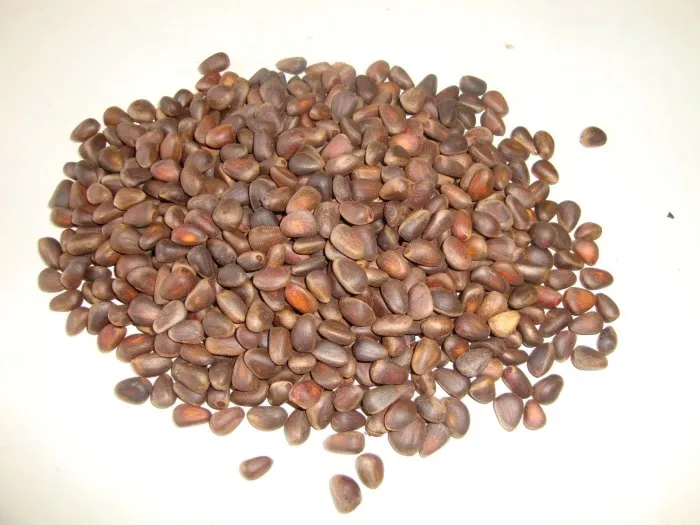
You can grow a pine tree in your garden not only from a seedling but also from fresh seeds. Often, they are planted directly in open ground, but many gardeners prefer to germinate them in pots first.
Growing cedar begins with selecting suitable seeds. Only high-quality seeds will sprout. When choosing nuts for planting, pay attention to:
- Weight. The nuts should be heavy enough. Very light seeds are likely empty.
- Appearance. The shell should be uniformly dark brown, without green or light spots, mould, cracks, growths, dents, or other damage. The seeds should be smooth and have the characteristic shape of pine nuts.
- Age. The highest germination rate is for seeds no older than one year. If the nuts are more than two years old, their germination rate drops by half. By the third year, the chances of sprouting are minimal.
It’s best to collect the seeds yourself. Cones lying on the ground are often affected by mould, fungal infections, or rodents, so they should be picked directly from the tree. The optimal time for collection is October and November.
Important! Avoid buying nuts from shops or markets. They may be over a year old or stored improperly, which negatively affects germination.
Before growing cedar from a nut, prepare the seeds:
- Discard any damaged, mouldy, or spotted specimens. Select the largest ones.
- Soak the nuts in a solution made of 1 tsp salt and 1 cup of water. After 30 minutes, remove the seeds that have sunk to the bottom and rinse them. Discard any that float, as they won’t sprout.
- Prepare a light pink potassium permanganate solution and soak the nuts for 2 hours. Then rinse them with clean room-temperature water.
Use 2–3 times more seeds than the number of seedlings you need, as pine nuts have a relatively low germination rate.
To extract seeds from a cone, leave it near a heater for a while or briefly expose it to flame. This helps the scales open.
Stratification
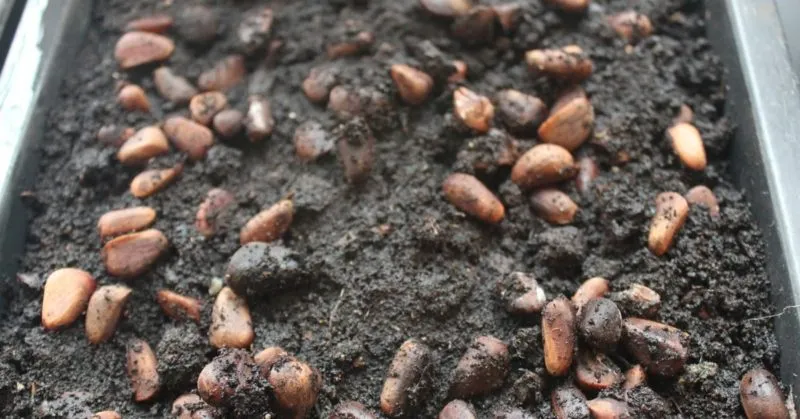
Stratification is a crucial step in germinating cedar. In nature, this happens naturally—seeds that fall to the ground remain there until spring. Gradual temperature changes and frost harden the seeds, preparing them for sprouting.
Artificial stratification:
- Take a wide, shallow box and fill it with soil. The substrate must be treated with a dark pink potassium permanganate solution.
- Plant the seeds in the prepared soil at a depth of 1–2 cm. Water generously with room-temperature water until the soil is thoroughly moist.
- Add a 5–7 cm layer of snow. Cover the box with film and place it in the refrigerator (not the freezer).
- Keep the soil moist, preferably with meltwater.
Stratification should last at least 3 months, with the seeds kept on the bottom shelf of the fridge or in a cellar.
Preparing Soil and Choosing a Container
Buy soil from a specialised shop or prepare it yourself.
Suitable mixtures include:
- Equal parts river sand, gravel crumbs, and peat;
- Peat from a coniferous forest mixed with garden soil in equal proportions;
- Equal parts sawdust, garden soil, peat, and sand.
Disinfect the soil by baking it in the oven, soaking it in a dark pink potassium permanganate solution, boiling water, or a solution of 10 litres of water and 3 tbsp copper sulphate.
Use drainage—crushed shells, expanded clay, fine gravel, or broken ceramics—and disinfect it as well.
Plant the seeds in one large container initially, as many may not sprout. A wide, shallow tray about 10 cm deep works well. Later, transplant them into deeper individual pots.
Disinfect containers by rinsing with boiling water, wiping with alcohol, or soaking in a dark pink potassium permanganate solution or a mix of 3 litres of water and 1 tbsp copper sulphate.
Planting and Germinating Pine Nuts at Home
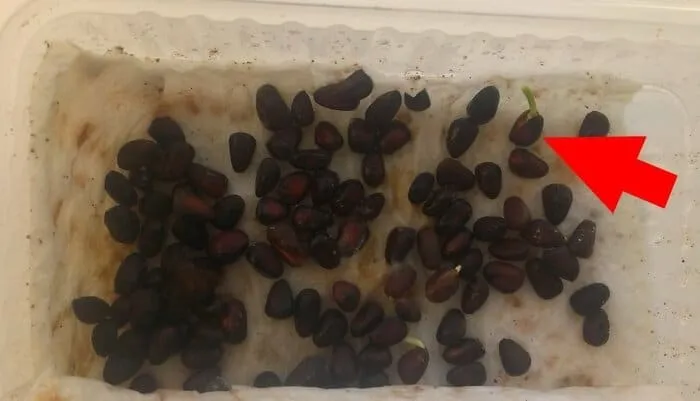
After 3 months of stratification, sow the seeds. They can be planted directly in open ground or grown indoors.
Tip! For outdoor planting, sow in autumn so the seeds undergo natural stratification.
Different Planting Methods
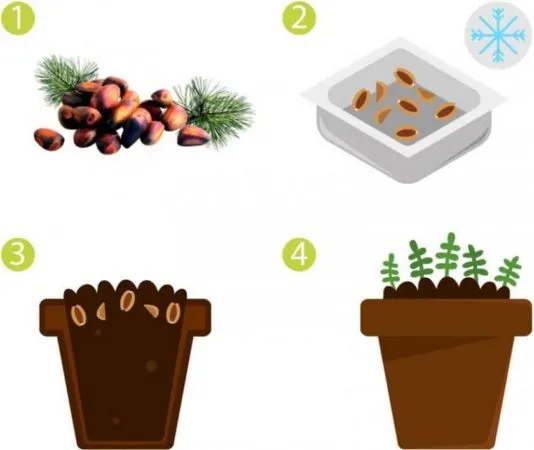
One simple germination method uses the stratification substrate. Take the box out of the fridge, water it with warm water, and place it in a warm, bright spot. Cover with film until sprouts appear, opening occasionally for ventilation. Keep the soil moist.
The downside is that untested seeds may carry fungus, reducing germination rates.
Most gardeners prefer transplanting nuts into fresh soil:
- Remove seeds from the stratification soil and inspect them. Discard mouldy, spotted, or soft ones.
- Rinse in a light pink potassium permanganate solution and dry.
- Fill the container with 1–2 cm of drainage, then soil, leaving 2–3 cm at the top.
- Plant seeds 0.5–1 cm deep, spaced at least 3 cm apart. Deeper planting slows germination.
- Water with room-temperature water. Cover with film or glass and place in a warm, bright spot.
- Keep the soil moist (preferably with meltwater) but not waterlogged.
Germination after stratification typically takes 1.5–3 weeks. Planting directly in individual pots is less efficient due to low germination rates.
Seedling Care Before Transplanting
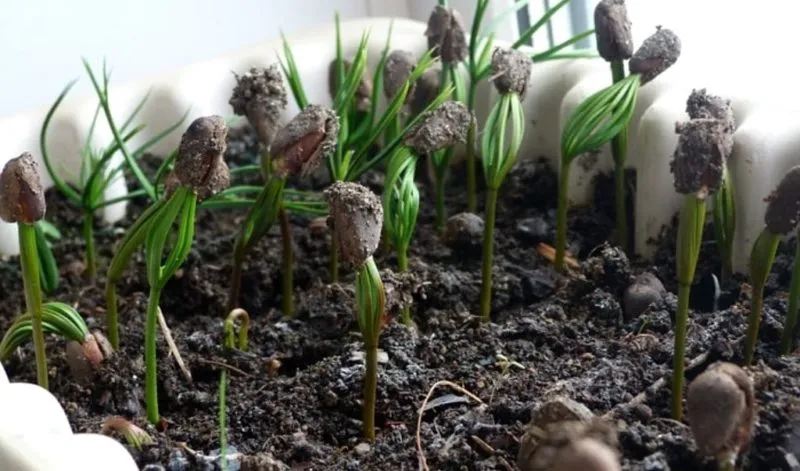
To ensure strong, healthy seedlings, follow these care guidelines:
- Keep sprouts at +20…+22°C with ample indirect sunlight.
- Water with meltwater or settled water as the soil dries, avoiding stagnation.
- When sprouts reach 3 cm, transplant them into individual 15 cm-deep pots with 5 cm of drainage. Bury them so the root neck stays above the soil.
- Protect from direct sun for the first 2 weeks post-transplant. Avoid fertilisers.
- Gradually acclimate seedlings to outdoor conditions, starting with 15-minute exposures and increasing to full days.
- Grow in pots for a year. In winter, store in a cool place (around 0°C).
Transplanting Seedlings to Their Permanent Spot
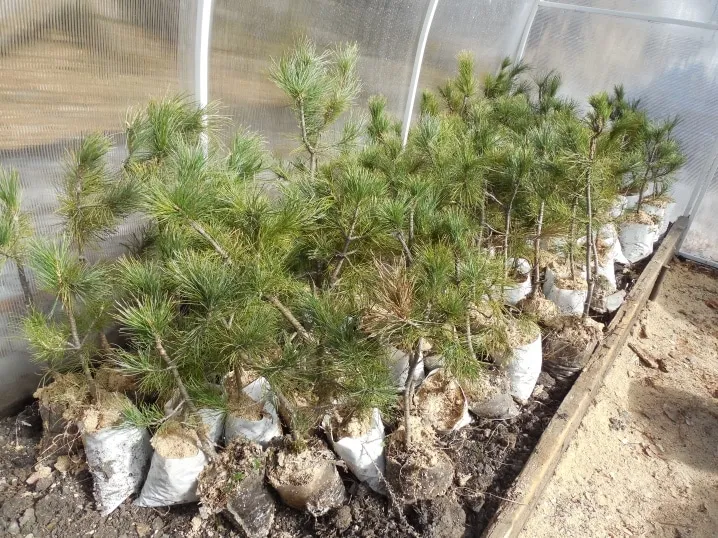
Plant cedar seedlings in their permanent location after one year. By then, they’ll be sturdy and acclimated. Transplant in spring once the soil warms.
Cedars thrive in cooler climates, such as Scandinavia or the Alpine regions. In warmer southern areas, they may struggle and are often grown in large pots instead.
Note: Cedars can also be grown indoors in large containers.
Choose a semi-shaded spot, possibly near shrubs that provide shade from intense sun.
Avoid saline soil. Groundwater should be no closer than 1.5 m to the surface.
Before transplanting, water and feed seedlings with wood ash infusion or diluted compost. Transplanting steps:
- Dig 70 cm-deep and wide holes, spaced at least 3 m apart from other trees.
- Add a 10 cm drainage layer (expanded clay, broken ceramics, or cones).
- Mix excavated soil with sand and peat (2:1:1 ratio).
- Place some mix in the hole, then transplant the seedling with its root ball. Fill gaps without burying the root neck.
- Water each plant with 4 litres of water.
- Mulch with compost or pine needles (20–25 cm thick).
Mycorrhiza for Better Adaptation
To help cedars adapt, introduce symbiotic fungi to the root zone. Use species found in coniferous forests.
Bring mycorrhiza from a forest or buy it. Mix it into the soil around the tree.
Ongoing Care
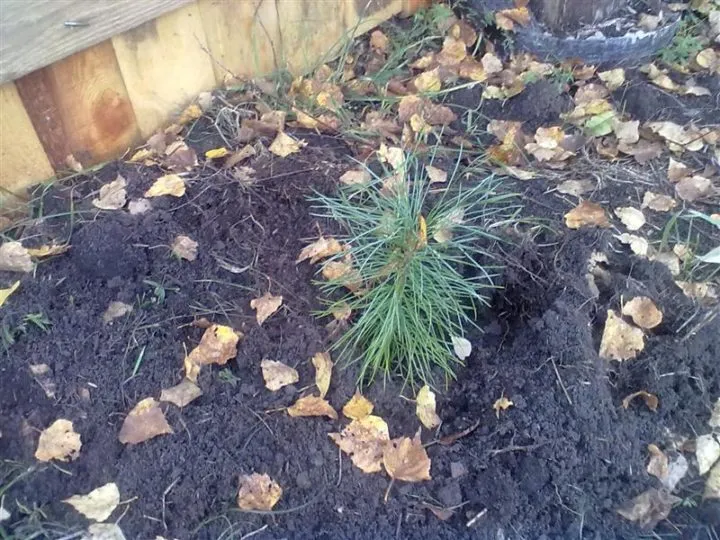
Cedar requires minimal maintenance:
- Watering: Once a week with settled water. Older trees need more.
- Fertilising: Twice yearly—60 g potassium nitrate in spring, 50 g superphosphate in autumn.
Conclusion
Growing cedar from seeds at home is possible with proper stratification, suitable conditions, and care. However, seeds planted directly in open ground often yield hardier trees.







